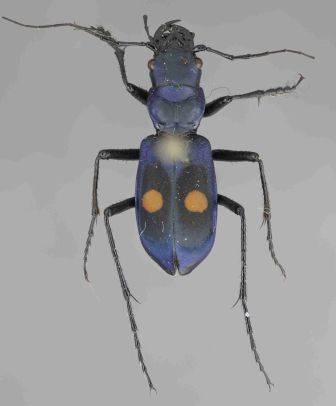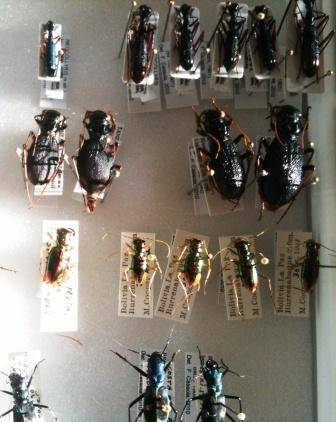2012 was an eventful year in London, marked by the Olympic Games and the Diamond Jubilee. However, the collections we serve have seen four centuries and ten monarchs, plenty of Olympics (including three in London) and more than a few jubilees (though no Diamond Jubilee since 1897, when the likes of the great Coleopterists Sharp and Champion were still hard at work). For the collections, and their curators, the year has brought its own challenges, triumphs and celebrations.
When the year began, Sharon Shute, Curator of Bostrichoidea, Chrysomeloidea and Historical Collections, had not been replaced since her retirement in 2011. It is a great credit to the team that we managed to keep everything more-or-less together during this period of being one person short, between us covering Sharon’s loans, visitors, databasing, enquiries etc. We made some significant steps forward as well. You can imagine our delight in October when we were given the go-ahead to recruit a new permanent curator, and after a rigorous recruitment we appointed Michael Geiser from Switzerland. We have known Michael for a few years, he has visited us twice on Synthesys grants and we have seen him at Prague Entomological meetings, often with his mentor Michel Brancucci (1950-2012), whose premature and much regretted death in October was a major loss to Coleopterology.
Michael is a well-known coleopterist, and has worked for seven years in Collection Management at the Basel Museum, where one of his achievements was the incorporation of the large collection of Walter Wittmer (1915-1998). Like Wittmer, Michael has a strong knowledge of, and interest in, the Cantharoidea, as well as in non-clerid Cleroidea, Chrysomelidae, and a number of other beetle groups. He has also been involved in Basel Museum’s Laos Project, and has spent more than nine months on tropical fieldwork in Laos. He will start work in May 2013, since he needs some time towards completion of his PhD on the small cleroid family Prionoceridae.

Michel and Michael at Prague insect fair
In the meantime we are very lucky to have Alex Greenslade as an interim curator, who has already started work on databasing the huge Criocerine genus Lema. Alex has been a volunteer at the Museum for over a year, working with Beulah Garner on recuration of Carabus ground beetles and Hypothenemus coffee berry borers, with Max Barclay on Ecuadorian dung beetles, and with Dick Vane-Wright on the beetle fauna of Bingley Island in Canterbury. He will be with us until the end of April working on various problems of the Chrysomeloidea.
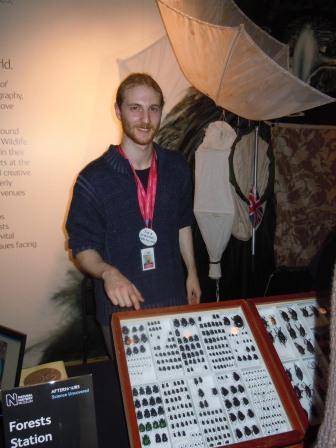
Alex Greenslade at Science Uncovered 2012
We are proud to have a 6th Scientific Associate, Hitoshi Takano, who will join Richard Thompson, Howard Mendel, Peter Hammond, Mike Morris and Robert Angus in this prestigious club. Hitoshi has a deep knowledge of several beetle groups especially in Cerambycidae and Scarabaeoidea, with probably his greatest strength in the African Cetoniinae. He is a very experienced fieldworker and has collected in Borneo, the Philippines, Guyana, and most particularly Tanzania and Zambia. The huge volumes of interesting material he has collected are being processed by Lydia Smith and Lucia Chmurova, and we are very pleased to have them back on the team.
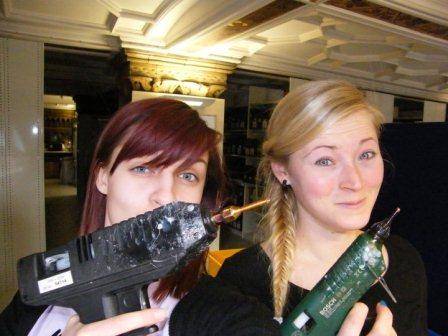
Lucia and Lydia, not only beetle experts but recently obtained the serious accolade of Glue Gun Olympics World Champions in Lichtenstein earlier this year...
In the earlier part of the year Katie Bermingham was also working on this project, but has now gone on to curate the Natural History Collections of Eton College but keeps in touch with her excellent blog.
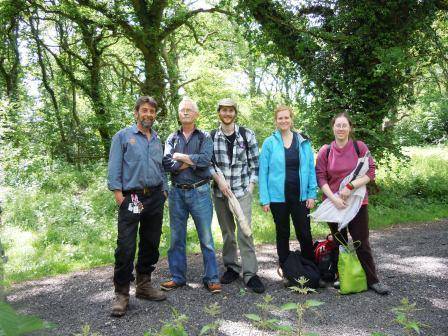
Here's Katie - in the pink! With Ian Swinney (Bookham Common Warden), Stuart Cole (Bookham Common Coleoptera recorder) and Alex and Emeline enjoying a rare rain-free day on the common
Between them they have databased almost 10,000 Tanzanian beetles at specimen level and mounted and family sorted considerably more. At the beginning of 2012 we were visited by Bruno Nyundo from the University of Dar-es-Salaam, who brought with him two students, Justine Maganira and Anna Mwambala. They stayed for a month, pinning, mounting and identifying Tanzanian beetles, as well as getting their first experience of a Northern Hemisphere winter, snow and all - but we hope they had a fantastic time while they were here. The whole Tanzania project would not have been possible without the support of Richard Smith, to whom we are all extremely grateful.
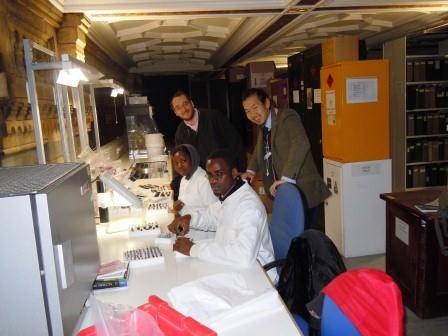
Anna, Justine, Max and Hitoshi in the lab (note: since when was tweed appropriate lab wear hmm?)
.JPG)
Hitoshi in the field in Tanzania - this is what happens when fieldworkers are left alone for too long in the wilderness; you make your own fun...
Our excellent team of volunteers have kept up the good work over the year. Emeline Favreau has completed recuration and reindexing of the Geotrupidae with the addition of several new species to the collection. Alexander Sadek is continuing with the huge African collections of the Reverend C. E. Tottenham, otherwise known as ‘Dotty Totty, who gave up the almighty for the Staphylinidae’; Alex has labelled literally thousands of Tottenham’s specimens collected in West Africa in the 1940s-1960s (Tottenham’s total collection, housed in hand made ‘match-boxes’ was estimated to comprise 250,000 specimens when it arrived in the 1970s).
Tom Thomson from Plymouth University has processed and labelled hundreds of molecular voucher specimens from the labs, and has completed the extraction of the data from all our UK BAP specimens. Gillian Crossan has continued with the conversion of the entire collection of Buprestidae to unit trays, which is being overseen and databased by Malcolm Kerley. Alex Greenslade, Emma Little, Andrew Richens, Bernadeta Dadonaite and Tom Thomson have worked on the Ecuador dung beetle project. Other volunteers and students who have made a contribution to the section this year include Georgie Macdonald, Lucy Cooper, Rosie Goldsmith, Adam Sharp, Stuart Cole, Alexander Kazhdan, Emma Hughes, Magnus Rowbotham, Harry Kelleher, Paul Klein, Rasa Sittamparam, Ayako Mori, Li Min Cheong, Hui Erh Tay, Sean Jordan and James Blyth Currie.
The year saw more than a little fieldwork, much of which has already been covered in the pages of this blog. Beulah began the year with a trip to Peruvian cloud forests with Brett Ratcliffe, Mary Liz Jameson and other members of the famed ‘Team Scarab’.
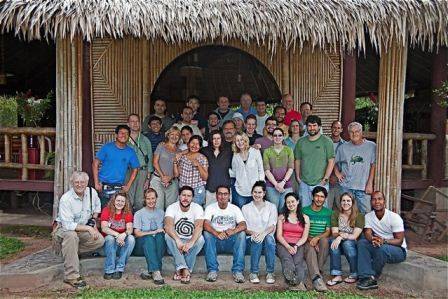
The international scarab collecting team in Peru
Hitoshi, Beulah and David Oram visited Tanzania, Hitoshi twice, as well as Zambia for 6 weeks.
.JPG)
The ever stylish entomologists reach the summit of Mount Hanang. Hitoshi models this season's must have red bandana and Beulah remains classic in Breton stripes...
Peter Hammond was in South Africa, Howard Mendel in Spain and Ascension Island, Lucia Chmurova was in Borneo, Rob Angus in Sardinia, Mike Morris in Bulgaria, and on top of that we also received beetles from members of other sections: The Democratic Republic of the Congo (Geoff Martin & Andy Polaszek), Madagascar (Geoff Martin and David Ouvrard), and UK (Duncan Sivell and David Notton), as well as material of great interest from Africa and South East Asia from Donald Quicke.
We have not neglected Bookham Common where we have run Lindgren Funnel Traps for the second year running in the hopes of augmenting a list that already stands at almost 1,600 species of beetles, and we are very grateful to National Trust Ranger Ian Swinney for his continuing support of our activities at this excellent site.
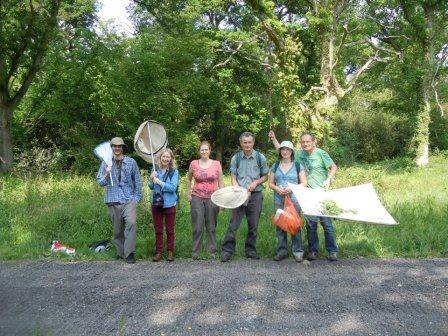
Alex, Beulah, Emeline, Roger Booth, Christine Taylor and Malcolm Kerley at Bookham
We also had some UK fieldwork in Bingley Island, near Canterbury, on a project led by Dick Vane-Wright and run by Alex Greenslade and Andrew Richens.
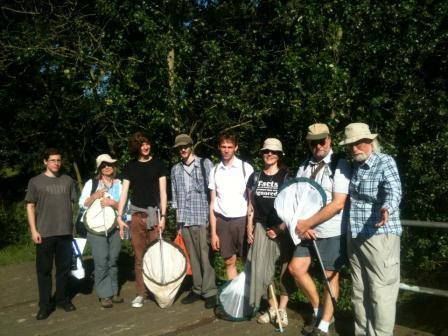
Dick Vane-Wright (far right) and team at Bingley
This year has also seen the acquisition of several major collections. The collection of Eastern Palaearctic Cerambycidae of Jiri Vorisek includes some 17000 specimens of 2256 species, with 28 Holotypes and 396 Paratypes; the type material includes some of Jiri’s own species, as well as type material from Breuning, Danilevsky, Heyrovsky, Holzschuh, Plavilstshikov and other (largely unspellable) 20th century authors. It was acquired partly thanks to the generosity of the artist Sarah Graham and partly through the vision of the NHM Collections Committee.
+indicate+Type+Material.jpg)
A typical drawer of Lepturinae longhorn beetles
We were also pleased to receive the beautifully curated British Beetle collection of Donald Prance, a quantity of material from Imperial College at Silwood Park (thanks to the good offices of Donald Quicke), some magnificent Neotropical material from Martin Cooper, part of the collection of the late botanist Eric Groves, the collections of the late Eric Brown, coleopterist father of Senior Hemiptera curator Paul Brown, and Derek Lott, well known specialist on Staphylinidae. Many of these people were (or are) our friends and close colleagues, and it has been said that leaving your collection to the Natural History Museum is equivalent to being buried in Westminster Abbey; we hope and trust that we can do justice to the faith that has been placed in us!
Throughout most of 2012 a case featuring part of the A.A.Allen collection of British beetles (acquired in 2010) and an account of Allen’s life and work was on display in the public galleries, where it was available to up to 4.5 million people.
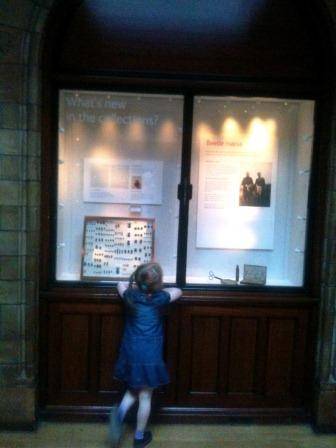
A fascination with beetles...
Three grants have been received to bring specialists over to work on the collections. Lukas Sekerka, working on Hispinae and Cassidinae, visited for 2 months in the winter, and Roger Beaver, expert on Scolytinae, will come in June to work on the F.G. Browne collection of that family. We also have a grant to strengthen our links with Peruvian entomologists, and we will be inviting some of our counterparts to visit in 2013.
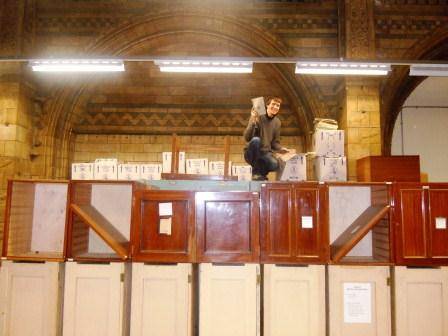
Chrysomelidae expert Lukas Sekerka raiding the coleoptera reprints!
Our statistics for the year remain impressive: 158 academic visitors used the collections for a total of 645 days. This beetle blog reached a total of 36 articles and more than 46,000 hits. We issued 304 loans of 24,000 specimens, and added 1833 new species of beetle to the collection.
The databasing of the collection of Thomas Broun (1838-1919), including more than 3,000 types, was completed, and work began on databasing one of our last undatabased assets, the Atlantic Islands collection of Thomas Vernon Wollaston (1822-1878).
Roger Booth has completed incorporation of the main J.A. Power (1810-1886), G. C. Champion (1851-1927) and David Sharp (1840-1922) collections of British aleocharine Staphylinidae; this material is taxonomically very complex, and very type rich, especially for the Homalota species described by Sharp in 1869. Much of it has been unincorporated and unprocessed since its acquisition in the early 20th century, formerly being held as three separate collections.

Roger waxing lyrical on J.B.S. Haldane; '...an inordinate fondness for beetles...'
Malcolm Kerley has completed the databasing of the Lucanidae identified by Matt Paulsen on his Curatorial Fellowship grant last year, and the entire databased collection of this family, including the large collection of Hugues Bomans, has been digitally scanned by Harry Kelleher, Vladimir Blagoderov and others. This vast resource will soon be made available online, so watch this space.

Malcolm demonstrating the 'Christmas spirit'!
Richard Thompson has completed the incorporation of the collection of the late Eric Gowing-Scopes, which comprised more than 44,000 specimens, mainly weevils. Richard has now turned his attention to the vast genus Otiorhynchus, which he intends to entirely recurate! We doubt that there is anyone else alive today who would even consider taking on such a vast and intricate task, and we wish him all luck and fortitude.

Scientific Associate Richard Thompson weeviling away in the collections!
Christine Taylor, helped by volunteer Molly Clery, has made great inroads into the incorporation of the collection of Robert Angus, and his British material of all families is now incorporated. She will now begin on his extensive and important collections of water beetles. As a Scientific Associate Robert has remained active not just in extant water beetles, but also in fossils, and in chromosome work on Leiodidae and Scarabaeidae, as well as an application to the ICZN to preserve current usage of the name Aphodius fimetarius for a common, bright red dung beetle.
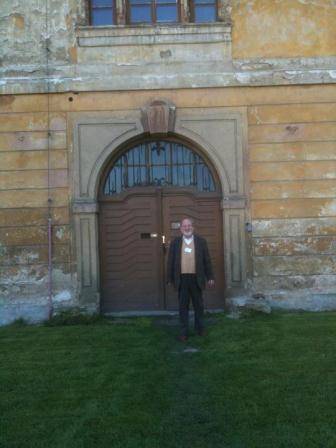
Robert Angus has left (the entomology) building, Prague!
Mike Morris has now completed the fifth volume in his Royal Entomological Society Handbooks for the Identification of British Weevils – it is probably the last unless he decides to recognise the Scolytinae as weevils- but he has plans to go back to the beginning and redo the early volumes to make allowance for numerous new introductions and discoveries in the British Isles fauna.
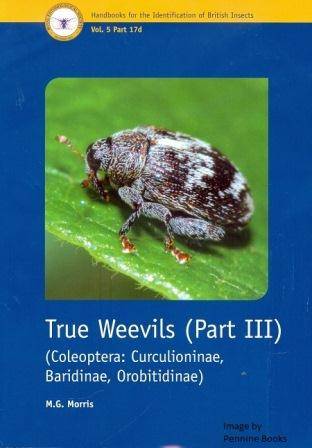
Mike has also register-labelled and checked the identification of several thousand weevils from the Oldrich Vorisek collection, acquired in 2010.
We have done our share of public outreach during the year, with Max, Chris Lyal and Conrad Gillett, Beulah, Hitoshi and most recently Lydia and Lucia as features in the Museum’s Nature Live calendar.
.JPG)
Lydia, Max and Lucia with Nature Live host Ana Rita explain what it means to work with beetle soup - every day...!
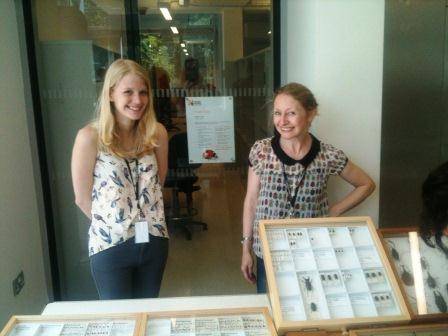
Emma Hughes (wearing non-standard issue bird themed top), Beulah wearing standard issue beetle themed top for National Insect Week!
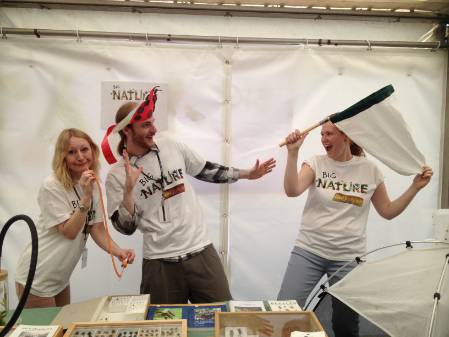
Big Nature Day at the NHM; there was a lull in the crowd, interest had waned; entomologists went wrong!
Science Uncovered on the 28th September was extremely well attended, with our beetle stall ably manned by Alex, Conrad Gillett, Hitoshi, David Oram, Lydia, Beulah, Max and others.
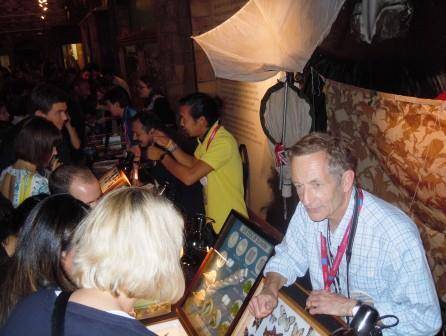
David Oram and Hitoshi at Science Uncovered (David is traitor - those are butterflies not beetles!)
We also repeated our successful training course ‘On the job training in family level identification of a hyperdiverse insect group: The Beetles (Coleoptera)’ , which was attended by Agnese Zauli from Rome and Natalie Lindgren from the USA.
The section has been present at both of the International Insect Meetings in Prague, in March and October, accompanied as ever by many friends and colleagues.
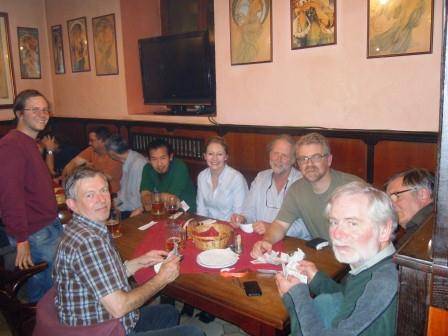
I like to call this one 'the money shot'! Donald Quicke, Michael Geiser, Hitoshi, Beulah, Howard Mendel, Duncan Sivell, Mike Morris and Martin Brendell enjoy more pork and beer in Prague after a hard days coleopterising!
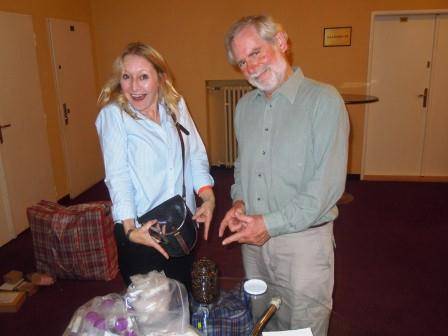
Beulah and retired Collections Manager Martin Brendell marvel at the stuffed-to-the-rim jar of beetles (13,140 to be precise!) from Laos (Martin is much more cool about it than Beulah though!), Prague insect fair
...as well as Entomodena in Italy during September
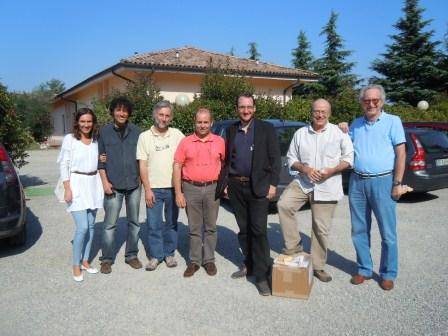
Max Barclay with Rebecca and Luca Toledano, Sergio Facchini, Stefano Zoia, Roberto Caldara, Mauro Daccordi (and a cardboard box full of parmesan cheese...?)
Max and Beulah (together with Erica McAlister and Duncan Sivell from Diptera) attended the Entomological Society of America (ESA) annual meeting in Knoxville Tennessee between 10th – 14th November which attracts over 3000 delegates from the United States as well as internationally, and the Entomological Collections Network (ECN) conference 10th-11th November. Beulah presented a talk on incorporating accessions material in to the main collection, entitled ‘Incorporating Carabus Accessions into the Natural History Museum World collection: 200 years in two months’ and Max spoke on the value of loans ‘Loans: Raising interest rates in our collection’ and on ‘An enigmatic new taxon of Neotropical Tenebrionoidea’.
The week was an exceptional networking opportunity, and an interesting foray into the heart of America; our hotel had notices warning us not to panic if ladybugs or stinkbugs (Harmonia axyridis or Halyomorpha halys) came into our rooms (which seemed somewhat superfluous considering that most of the guests were professional entomologists), and deep fried cricket and caterpillar snacks were served instead of peanuts at the evening mixer!
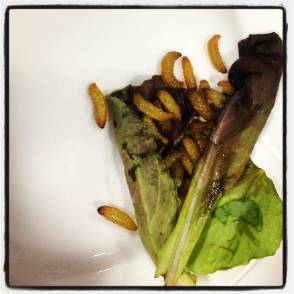

Don't be alarmed - it's only beetles (and bugs)!
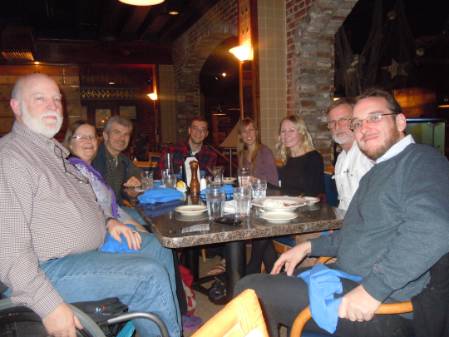
It's funny how most of our photos seem to involve drinking and eating! Left to right: Mike Ivie, Donna Ivie, Ted McRae, Frank Etzler, Rita Isa Velez, Beulah, Paul Johnson and Max in a seafood restaurant somewhere in Knoxville, Tennessee!
The year ended on a high note with a sectional lunch at the Oriental Club, organised by Hitoshi, David and Beulah, where exceptionally good food and fine wines underlined what has been a very successful year for the Coleoptera Section. We hope for, and would like to wish you all, a very happy and prosperous 2013!
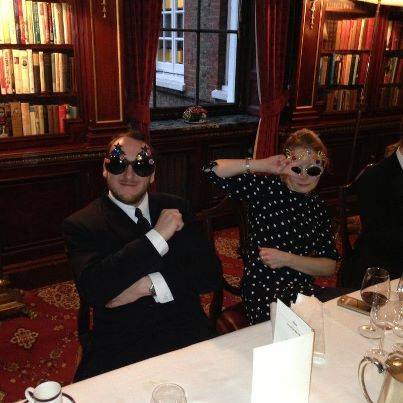
This is perfectly normal...

A collection of entomologists...
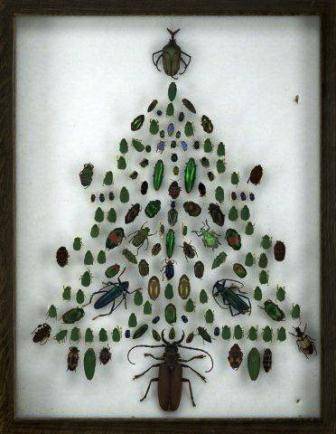
It's not all fun in the Coleoptera section, we are bang up-to-date and have been busy working on our trees...!
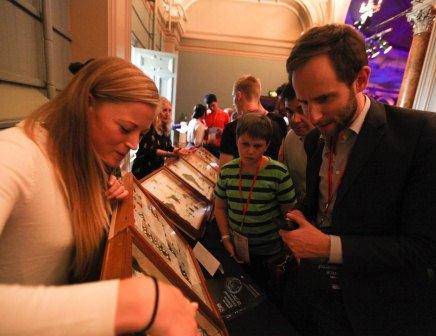 Lydia and Beulah spanning 250 years of Museum collections at TEDx Albertopolis.
Lydia and Beulah spanning 250 years of Museum collections at TEDx Albertopolis. Joana Cristovao, Chris's student and assistant games mistress!
Joana Cristovao, Chris's student and assistant games mistress!


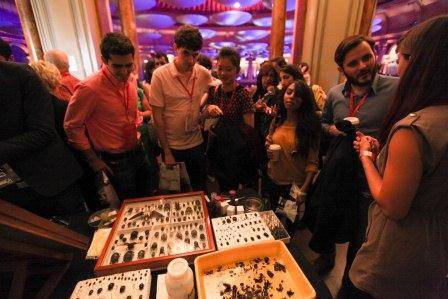
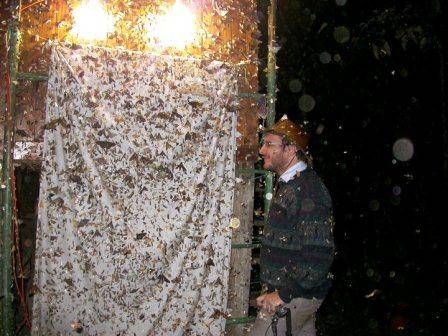
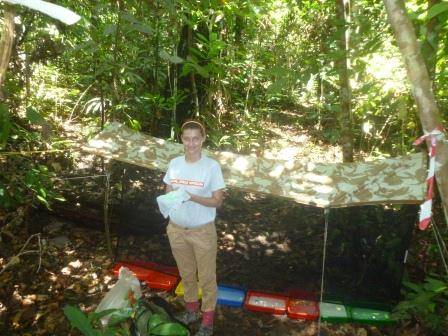
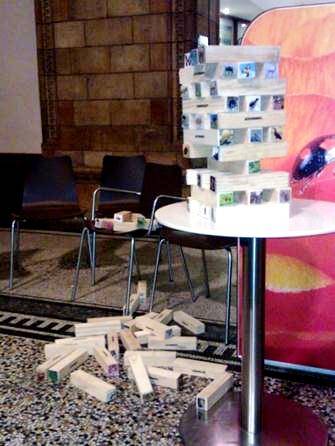
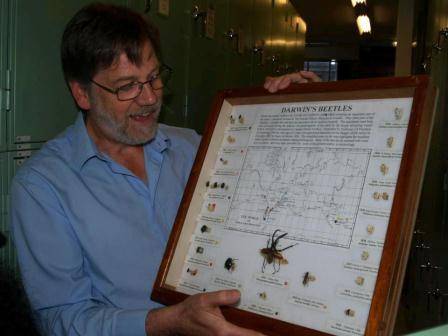
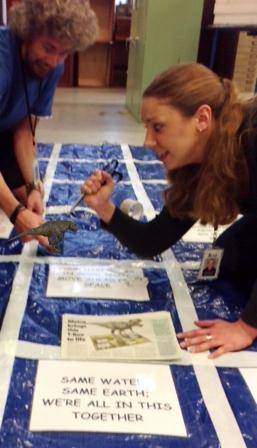






+indicate+Type+Material.jpg)










